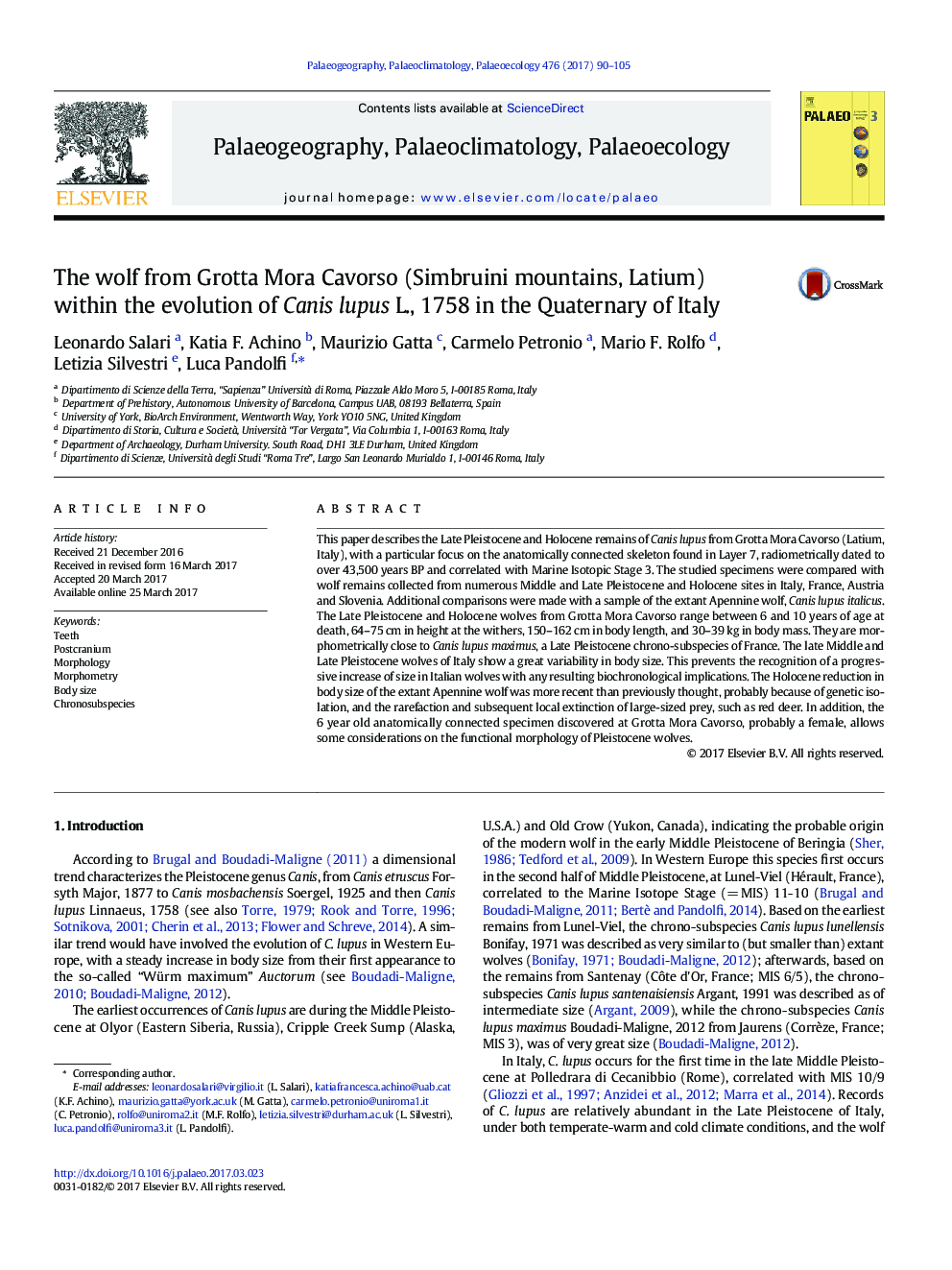| Article ID | Journal | Published Year | Pages | File Type |
|---|---|---|---|---|
| 5755888 | Palaeogeography, Palaeoclimatology, Palaeoecology | 2017 | 16 Pages |
Abstract
This paper describes the Late Pleistocene and Holocene remains of Canis lupus from Grotta Mora Cavorso (Latium, Italy), with a particular focus on the anatomically connected skeleton found in Layer 7, radiometrically dated to over 43,500Â years BP and correlated with Marine Isotopic Stage 3. The studied specimens were compared with wolf remains collected from numerous Middle and Late Pleistocene and Holocene sites in Italy, France, Austria and Slovenia. Additional comparisons were made with a sample of the extant Apennine wolf, Canis lupus italicus. The Late Pleistocene and Holocene wolves from Grotta Mora Cavorso range between 6 and 10Â years of age at death, 64-75Â cm in height at the withers, 150-162Â cm in body length, and 30-39Â kg in body mass. They are morphometrically close to Canis lupus maximus, a Late Pleistocene chrono-subspecies of France. The late Middle and Late Pleistocene wolves of Italy show a great variability in body size. This prevents the recognition of a progressive increase of size in Italian wolves with any resulting biochronological implications. The Holocene reduction in body size of the extant Apennine wolf was more recent than previously thought, probably because of genetic isolation, and the rarefaction and subsequent local extinction of large-sized prey, such as red deer. In addition, the 6Â year old anatomically connected specimen discovered at Grotta Mora Cavorso, probably a female, allows some considerations on the functional morphology of Pleistocene wolves.
Related Topics
Physical Sciences and Engineering
Earth and Planetary Sciences
Earth-Surface Processes
Authors
Leonardo Salari, Katia F. Achino, Maurizio Gatta, Carmelo Petronio, Mario F. Rolfo, Letizia Silvestri, Luca Pandolfi,
